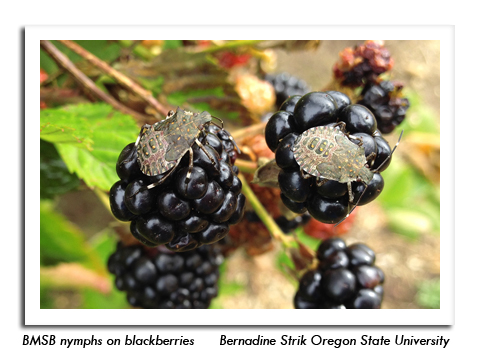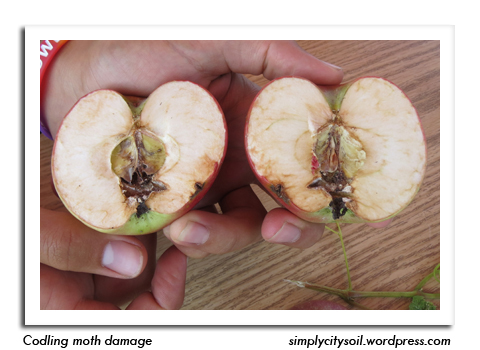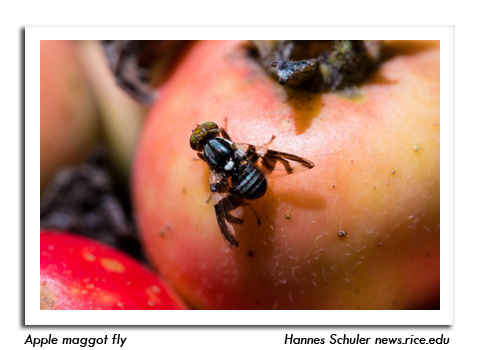
 |
|
|
Fruits
Volume 64 Number 18 Date 08/29/2019 BROWN MARMORATED STINK BUG - Fruit growers and homeowners are advised to watch for swarms of this pest on warm fall days as the bugs aggregate in search of overwintering sites. BMSB is now well established throughout much of southern and eastern Wisconsin, with the highest densities concentrated in the areas from Fond du Lac north to Green Bay and in southern Wisconsin from Dane and Rock counties east to Milwaukee. Nymphs and adults usually remain active through October or early November. CODLING MOTH - Large moth flights continued in a few southern orchard locations in the past week, though numbers have declined at most sites. Apple growers are reminded that evaluating second-generation larval damage by early September will help to anticipate first-generation codling moth pressure next season. Orchards that have recorded captures higher than 10 moths per trap per week since the second flight began in July should find visible fruit damage at harvest. If trap counts were high (>10 per week) yet no damage is observed this fall or less than 1% of fruits are infested, then the source of the moths is likely from outside of the orchard. APPLE MAGGOT - Flies are expected to persist in orchards for several more weeks, or until about 2,800 degree days (modified base 50°F) have been reached. The base 50°F accumulation as of August 28 was 2,330 at Beloit, 2,302 at Madison and 2,039 at Racine. Apple maggot pressure has been variable but generally low this season. Continued maintenance of red sphere traps is recommended through early September. SPOTTED TENTIFORM LEAFMINER - The third and last flight of the season has likely peaked in most apple orchards. Another larval generation should be anticipated in September. The third-generation pupae that develop by fall will remain dormant in the mines and overwinter inside of leaves on the ground. Apple growers who recorded large numbers of moths this month (>500 per trap) can assess infestations in September by monitoring orchard perimeters for leaf mines. SPOTTED WING DROSOPHILA - This invasive fruit pest will remain a threat to ripening fruit as the fall raspberry season continues. Berry growers are advised to maintain treatment programs. Sprays applied in the early evening, 1.5 hours before or after sunset, will maximize contact exposure with SWD in the canopy since peak fly activity occurs between 6:00 and 10:00 pm. Insecticide rotation is critical for preventing SWD resistance development if short-interval sprays are being used, and pre-harvest interval (PHI) must be followed. Also necessary for SWD control are clean, daily harvests of all mature raspberries and cooling fruits to 34-38°F immediately after harvest, if the berries are not being delivered to markets the same day. -- Krista Hamilton, DATCP Entomologist 




|
|
|